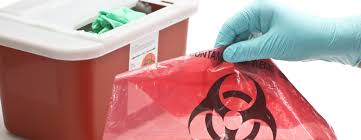Bloodborne Pathogens Training: Key Precautions & PPE Basics

Introduction: Why Bloodborne Pathogens Training Matters
Bloodborne pathogens are microorganisms in human blood that can cause serious diseases such as HIV, Hepatitis B, and Hepatitis C. Exposure can happen in healthcare settings, labs, first aid scenarios, or even at home during emergencies.
Bloodborne Pathogens training equips individuals with critical knowledge to handle blood safely, prevent infections, and protect themselves and others. Online certification from CPR Certification Now makes learning accessible, flexible, and recognized by employers.
Who Should Take Bloodborne Pathogens Training
- Healthcare Workers: Nurses, EMTs, medical assistants, lab technicians
- First Responders: Firefighters, paramedics, and police officers
- Childcare Staff & Educators: Teachers, daycare workers, school nurses
- Fitness & Personal Care Professionals: Personal trainers, massage therapists, tattoo artists
- Maintenance & Cleaning Staff: Janitors, custodians, and waste management personnel
- Volunteers & Parents: Anyone at risk of exposure to blood or bodily fluids
Tip: Even if your role doesn’t involve routine blood exposure, training provides life-saving skills for emergencies at home or in public.
Key Precautions in Bloodborne Pathogens Training
Effective training emphasizes safety and prevention through the following precautions:
1. Understanding Transmission
- Pathogens can be transmitted through direct contact with infected blood or bodily fluids.
- Indirect exposure occurs via contaminated surfaces, sharps, or personal items.
- Awareness reduces the risk of accidental infection.
2. Use of Personal Protective Equipment (PPE)
- Gloves: Protect hands when in contact with blood or bodily fluids.
- Gowns & Aprons: Shield clothing and skin from contamination.
- Face Masks & Shields: Prevent exposure to splashes or droplets.
- Eye Protection: Essential for procedures with high splash risk.
3. Proper Hygiene Practices
- Wash hands thoroughly after contact with blood or contaminated surfaces.
- Avoid touching face, eyes, or mouth during procedures.
- Dispose of PPE and contaminated materials safely according to OSHA guidelines.
4. Safe Handling of Sharps
- Never recap used needles; dispose in approved sharps containers.
- Use engineering controls where possible (safety-engineered devices).
- Report any accidental exposure immediately.
PPE Basics: What You Need to Know
Personal Protective Equipment (PPE) is your first line of defense. Key tips for proper use include:
- Correct Fit: Gloves, masks, and gowns should fit comfortably without gaps.
- Donning & Doffing Sequence: Put on PPE before exposure and remove safely to avoid contamination.
- Single Use: Dispose of disposable PPE properly; never reuse disposable gloves or masks.
- Inspection: Check PPE for tears, defects, or contamination before use.
Callout Tip: PPE is effective only if used consistently and correctly. Regular training reinforces proper habits.
Course Structure for Online Bloodborne Pathogens Training
Online certification programs like CPR Certification Now cover:
- Introduction to Bloodborne Pathogens
- OSHA regulations and workplace compliance
- Modes of transmission and risk assessment
- Bloodborne pathogen control measures and PPE
- Emergency procedures for accidental exposure
- Quizzes and final assessment for certification
Pro Tip: Interactive online courses provide videos, scenario simulations, and assessments to ensure mastery of content.
Benefits of Completing Bloodborne Pathogens Training Online
- Flexible Learning: Study at your own pace from anywhere.
- Time-Efficient: Complete training in just a few hours.
- Recognized Certification: Employers widely accept accredited online courses.
- Cost-Effective: Avoid travel and classroom fees.
- Practical Skills: Apply knowledge immediately in professional or emergency situations.
Tips to Maximize Training Effectiveness
- Practice proper donning and doffing of PPE regularly.
- Review scenario-based examples to understand real-life applications.
- Stay updated on OSHA standards and guidelines.
- Encourage coworkers and team members to take training for a safer work environment.
- Keep digital or physical copies of your certification for workplace compliance.
Frequently Asked Questions (FAQs)
1. Who requires Bloodborne Pathogens training?
Healthcare workers, first responders, childcare providers, and anyone exposed to blood or bodily fluids.
2. How long does the online course take?
Typically 1–3 hours depending on pace and course complexity.
3. Is prior experience required?
No, the course is suitable for beginners and professionals alike.
4. How long is the certification valid?
Most certifications are valid for one year; refresher courses are recommended for renewal.
5. Will employers accept online certification?
Yes, accredited courses are widely recognized for workplace compliance.
6. Does the course cover PPE basics?
Yes, proper PPE usage, donning/doffing sequences, and disposal practices are core components.
Conclusion: Get Certified and Stay Safe
Bloodborne pathogens pose a serious risk, but proper training and PPE usage significantly reduce exposure. Completing an online Bloodborne Pathogens course equips you with life-saving knowledge, compliance skills, and the confidence to respond safely to emergencies.
With flexible online certification from CPR Certification Now, you can learn critical precautions, understand PPE basics, and receive recognized certification—all from the convenience of your own home or workplace.




